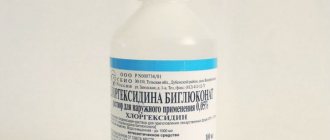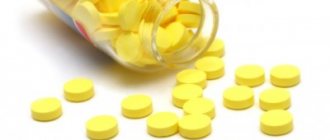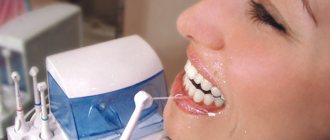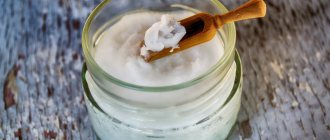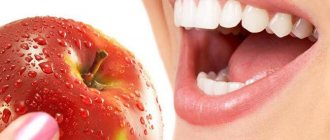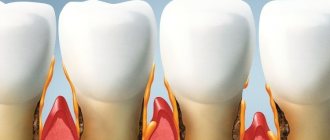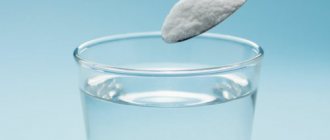Characteristics of Chlorhexidine
Chlorhexidine bigluconate is a drug with a pronounced antimicrobial, antiseptic and disinfectant effect. It is actively used in dentistry, gynecology, otolaryngology, dermatology, and urology. It is quite possible to be poisoned by Chlorhexidine, but not with the kind sold in pharmacies. This is a 0.05% aqueous solution, transparent, without a specific smell or taste. This Chlorhexidine is capable of killing bacteria on the skin and mucous membranes, and when taken orally it causes only mild signs of poisoning. Another thing is a 20% alcohol dilution, intended for the needs of medical departments. It is diluted locally to 0.5%, 1%, 5% for antiseptic wiping of surfaces and disinfection of instruments.
If a 20% solution of Chlorhexidine is swallowed, a severe burn of the mucous membranes of the gastrointestinal tract, incompatible with life, is possible.
Mouth rinses: indications
After gum opening or tooth extraction.
In this case, the oral cavity is rinsed 3 times a day. Although it would be better to do baths, because active rinsing can lead to inflammation. After all, after a tooth is removed, a hole remains, and when rinsing, a blood clot may fall out of it and the inflammatory process will begin. If complications arise after tooth extraction, then rinsing, even in combination with antibiotics, is completely useless. In this case, you should immediately contact a dental surgeon who will debride the wound and apply medication.
For bleeding and gum inflammation.
Bleeding and swelling of the gums are clear signs of inflammation, which can be caused by tartar and microbial plaque on the teeth. Without removing the cause of inflammation, any treatment (ointments, gels, rinses) will be completely ineffective. Some improvement, of course, will appear, but the disease can progress completely unnoticed, which can lead to tooth mobility and other negative consequences. Therefore, rinsing for periodontitis and gingivitis is completely useless. First, you should contact a dentist, who will professionally remove all dental plaque and prescribe anti-inflammatory therapy.
Read also: Toothache antibiotics
For stomatitis.
“Chlorhexidine” shows quite good activity against the herpes virus, but still, for herpetic stomatitis, it is better to use the “Miramistin” solution. However, there are forms of stomatitis that are caused by bacteria. These include, for example, the aphthous form of stomatitis. In this case, Chlorhexidine solution will be an excellent addition to the main treatment. Rinse the mouth with the solution 2 times a day.
Important! The course of rinsing with Chlorhexidine solution should not exceed 12 days, since longer use of this drug can lead to dysbiosis of the oral cavity. Chlorhexidine may cause allergies in some people.
Causes of drug poisoning
Taking Chlorhexidine solution orally is strictly prohibited, but this method of use is used with alarming regularity. And it's not about suicide attempts at all. Fans of healthy lifestyle practice the method of treating various diseases in such an original and very dangerous way. It is not surprising that due to damage to the mucous membranes, pathologies that were previously mild in severity begin to progress and often recur.
Poisoning can also occur due to carelessness. This drug is often prescribed to treat the throat in the treatment of respiratory infections along with cough syrups and antibiotic suspensions. If you feel unwell, it is quite possible to mix up the bottles.
A 20% alcohol solution of Chlorhexidine can be converted into vapor. In a confined space, inhaling them can lead to severe intoxication.
Rinse during pregnancy: basic rules and dosage
Gargling with Chlorhexidine correctly!
The instructions for using the solution indicate that the drug should be used when the benefit to the woman outweighs the risk to the fetus. However, the medicine is considered relatively safe for the body of the expectant mother and does not reach the child through the blood and placenta. Therefore, experts often prescribe this medication to pregnant women. You can gargle with the solution even in the first trimester.
It must be remembered that in any case it is not allowed to independently select and treat with a solution during pregnancy. Only a qualified specialist should prescribe medicine, dosage and treatment regimen to expectant mothers.
Before gargling, it is important to rinse your throat with regular boiled but warm water. This helps cleanse the mucous membrane of contamination. You can also treat your throat before using this drug with chamomile infusion or saline-soda solution. The main thing is that the liquid during the procedure is warm.
After this, take Chlorhexidine in a percentage concentration of 0.05%. There is no need to dilute it with water.
Place a tablespoon of the solution in your mouth and gargle for 1-2 minutes.
When performing the procedure, you should tilt your head back so that the solution washes the entire mucous membrane of the throat. To properly rinse, it is recommended to stretch your tongue forward and pronounce the sound “u”. This advice will help the solution get into hard-to-reach places.
More information on how to properly prepare a soda-salt solution for gargling can be found in the video:
Licorice syrup during pregnancy: description and properties of the drug
The number of procedures per day should be no more than three times. It is better to gargle in the morning, at lunchtime and before going to bed. Duration of treatment is up to seven days. It is not recommended to eat food after the procedure for sixty minutes.
Gargling is considered one of the important methods of treating inflammatory and infectious pathologies of the throat. It is important to learn how to gargle correctly so that the liquid does not enter the digestive tract. In a situation where this happens, it is necessary to perform a gastric lavage, drink activated charcoal and report the incident to a specialist. In addition to gargling, you can wipe the throat for ENT diseases with a solution of Chlorhexidine. To do this, soak a cotton swab in the liquid and treat the mucous membrane with it.
Contraindications and side effects
The drug should not be used for longer than 7 days!
The use of Chlorhexidine has some limitations. These include:
- Hypersensitivity to some components of the drug.
- Simultaneous use with other antiseptics and alkaline solutions.
- Various types of dermatitis.
- Use along with medications that contain iodine (Yox, Lugol's solution).
The drug may cause some side effects. Such phenomena may include:
- Rashes on the skin.
- Temporary staining of teeth and tongue.
- Impaired taste as a result of bitterness of the solution.
- A burning sensation in the throat.
However, it is important to note that such consequences occur extremely rarely, most often when the patient has a tendency to allergies, hypersensitivity to the substances included in the composition and in case of a possible overdose.
Pregnant women are allowed to use the solution at a concentration of 0.05%.
Dryness in the mouth and throat mucosa, sleep disturbances, headache, unpleasant taste, and darkening of the teeth may also occur in those patients who use the solution for more than seven days. Cases of overdose of the drug have not been recorded. However, experts advise women who are at risk of developing allergic phenomena to use the medicine with caution.
Symptoms of Chlorhexidine poisoning
Taking a concentrated alcohol solution is much more difficult for the body to tolerate than an aqueous solution. The main signs of such poisoning:
- attacks of nausea and vomiting;
- pain in the throat, epigastric region and abdomen, heartburn, sour belching;
- diarrhea or constipation;
- impaired coordination of movements;
- migraine-like headaches;
- tremor of the limbs, turning into convulsions;
- facial redness;
- drop in blood pressure;
- thready pulse.
When inhaling vapors, shortness of breath, a feeling of lack of air when inhaling, redness of the eyes, and dryness of the nasal mucosa occur. If first aid is not provided, the victim loses consciousness.
How is chlorhexidine 0 05 usually used?
The instructions for use of chlorhexidine 0 05 tell us that the use of the drug is very wide. It is used not only for rinsing the mouth and wiping surfaces, but also for douching the internal genital organs and washing the external organs. It will also help prevent sexually transmitted infectious diseases, just after each act you need to douche and treat the external genitalia with the composition.
The instructions for chlorhexidine 0 05 also tell us that the composition can be used for washing wounds. They even use it to wash out the canals of teeth before filling them. That is, if there is severe suppuration of pulpitis, then rinsing with a soda solution is usually prescribed, but rinsing with chlorhexidine will be an excellent way, it will cleanse the tooth of the abscess. It is also used for periodontitis. By the way, his treatment looks something like this:
First aid for Chlorhexidine poisoning
If a person swallows Chlorhexidine while gargling, it is advisable to induce vomiting. To do this, you need to drink warm water or a slightly pink dilution of potassium permanganate, and then press your fingers on the root of the tongue. In case of poisoning, it is strictly forbidden to rinse the stomach after taking a concentrated alcohol solution . When it passes, it will burn the esophagus and mouth, causing serious breathing problems.
In this case, you need to call a doctor, and before he arrives, help the victim:
- give any fast-acting laxative, for example, magnesium sulfate, as well as enterosorbent - Polyphepan, activated carbon, Enterosgel;
- drink hot, sweet tea.
The arriving doctor decides what to do next. He examines an adult or child and, if necessary, hospitalizes him.
For stomach pain that occurs after poisoning, you can give the victim any analgesic (Paracetamol, Analgin). But nonsteroidal anti-inflammatory drugs that stimulate the production of hydrochloric acid by the gastric mucosa are strictly contraindicated.
Chlorhexidine for gargling for children
According to the instructions, Chlorhexidine for gargling is used for children from 7 to 12 years old, since its use is dangerous for treating younger children. This is due to the fact that the child may swallow the solution while rinsing. For children of this age, with a severe cold, you can wipe the throat with a cotton swab, which will very quickly help the sick child.
More interesting things
A spoonful of flaxseed oil is more healing than expensive medicine: 5 valuable recipes for use
Parents can explain the rules of rinsing to school-age children and allow them to carry out the procedure on their own.
For young children, it is more acceptable to treat inflamed areas of the throat with cotton swabs soaked in the solution.
For older children, rinse with a 0.05% solution of the medicine, diluted with warm water in the proportion of 1 part of the medicine to the same amount of water. If you need a weaker solution, you can take it in a ratio of 1:2.
Like adults, children also need to first brush their teeth and treat the oral cavity with soda and salt infusion. You should eat two hours after the procedure.
The drug envelops the inflamed area with a film, is not absorbed into the body and acts as an antiseptic and antimicrobial agent.
Treatment of intoxication
The toxicity of Chlorhexidine is high only at high concentrations. In this case, the victim is hospitalized for further treatment in a hospital. There is no specific antidote that can neutralize the active ingredient, so therapy is aimed at eliminating the symptoms of poisoning.
The following clinical and pharmacological groups are used:
- enterosorbents;
- gastroprotectors;
- hepatoprotectors;
- regeneration stimulants.
For fluid loss with vomiting and diarrhea, treatment regimens include Hydrovit or Regidron. Their use allows you to replenish the reserves of essential macroelements. Severe poisoning requires intravenous administration of solutions of sodium chloride, Ringer, and glucose.
Research data
The scientific literature describes several cases of observing changes in the condition of patients who accidentally drank Chlorhexidine .
The first case describes a clinical situation where a young dental student accidentally ingested a small amount of undiluted 20% Chlorhexidine, while the maximum permissible concentration of this drug used for medicinal purposes is 0.2%.
The consequences of taking Chlorhexidine for the student were as follows:
- headache appeared;
- temporary decrease in the quality of vision and changes in taste preferences;
- partial euphoria.
Despite all this, not a single systemic pathological change was detected in the body.
In another case, several observations were described of children who also accidentally took Chlorhexidine, but with a concentration of 0.06%. After gastric lavage and taking activated charcoal, no systemic disorders were identified in the children.
Found a mistake? Select it and press Ctrl + Enter
Read also: How to take Ketanov for toothache
Features of intoxication
If you drink Chlorhexidine in the form of 0.05% aqueous dilution, then, with a high degree of probability, signs of poisoning will arise due to self-hypnosis. Exceptions are children, old people, and weakened patients. An overdose is manifested by nausea, dizziness, mild peristalsis, lack of appetite, and drowsiness.
In children
In pediatrics, Chlorhexidine is used from birth to destroy germs and viruses. It is used to treat diaper rash, abrasions, wounds, cuts, and skin rashes of allergic origin. If 1-2 tablespoons are accidentally swallowed, a slight disturbance of peristalsis is noted. But a concentrated solution of the drug that enters the child’s stomach is poisonous. The famous pediatrician Komarovsky warns parents against self-medication for any poisoning. If Chlorhexidine solution enters the stomach, the child must be immediately taken to the intensive care unit.
During pregnancy and lactation
During the period of bearing a child, Chlorhexidine is prescribed to women for rinsing the throat, treating gums and teeth after visiting the dentist, and for otitis media for instillation in the ear. It quickly destroys pathogenic microorganisms without having a negative effect on the fetus. But during pregnancy, it is dangerous for a woman to come into contact with a 20% alcohol dilution of the drug, including its vapor. Its active substance is able to penetrate biological barriers, including placental ones.
How to gargle: instructions for use
- Take a solution of chlorhexidine, the concentration of which is 0.05%, then dilute it 1 to 1 or 1 to 2 with warm water. If the child is over 12 years old, do not dilute the solution.
- Since a diluted or open medicine loses its properties in 30-40 minutes, prepare a portion of the solution for one procedure immediately before manipulation.
- First, the child should rinse the neck several times with just warm water.
- Next, he should take the prepared chlorhexidine solution in the amount of one tablespoon into his mouth and gargle for about 30-60 seconds.
- For sore throat, this rinse is performed twice in a row.
- After treatment, you should not eat or drink anything for 1-2 hours.
- Gargling is performed 2-3 times a day, and in case of severe sore throat - up to 4 times.
- Duration of use should not exceed 7 days.
Prevention and precautions
More often, poisoning is diagnosed in children, and not even the smallest ones. If the bottle is left in a visible place, then the child’s curiosity will always prevail over the parent’s prohibition from touching the medicine. Out of curiosity, a baby may swallow a product that does not have an unpleasant taste or odor. The drug should only be stored in a locked box. Poisoning also occurs when taking expired Chlorhexidine. Chemical reactions have already begun to occur in it, increasing its toxicity. It is imperative to monitor the expiration date of the drug.
What to do if the drug accidentally gets into the stomach?
The anti-inflammatory drug Chlorhexidine has the ability to suppress gram-positive and gram-negative bacteria, protozoa, and the herpes virus. The medicine has been produced since the fifties of the twentieth century, it was developed in England in 1950. As a chemical compound, it is dichlor containing a biguanide derivative.
In dental practice, Chlorhexidine is used only in the form of solutions of various concentrations, although in general medical practice there are suppositories with this medicine, ointments, rinses, etc.
- The solution with the lowest concentration is 0.05%. The solution in this concentration is most often used in dentistry. They can be used to rinse the mouth, treat wounds and dental canals;
- A solution with a concentration of 0.1% is used exclusively for the treatment of orthopedic structures;
- A concentration of 0.2% is not used in cases where contact of the drug with the mucous membrane is necessary, but endodontists resort to chlorhexidine when treating tooth canals during endodontic manipulations.
Please note that when alcohol solutions with a drug concentration exceeding 1% are applied to the mucous membrane, chemical burns may occur. Therefore, if it is necessary to treat the mucous membrane, use preparations of 0.05% concentration.
Women during pregnancy and lactation can use the medicine, but only if such a need really exists. Only a treating specialist can prescribe an antiseptic for pregnant women. You should not self-medicate.
According to medicine, wounds are the most common traumatic injuries. When injured, the integrity of the skin is damaged. Depending on their depth, blood vessels, muscles, ligaments, bones and other organs can be damaged. At home, we most often deal with how to properly treat and treat wounds, doctors who are specialists in surgery tell in this article.
The biggest problem with wounds is the threat of infection, so you need to wash the wound as soon as possible, disinfect it and cover it with sterile material to prevent further microbial contamination. In everyday life, at home, as a rule, minor wounds and abrasions occur, accompanied by damage to the skin and muscles.
These are minor wounds. Wounds are considered severe in surgery if they are deep, dirty, contaminated with foreign bodies, as well as wounds that are bleeding or that occurred more than 6 hours ago. These wounds require absolute medical intervention for their treatment and treatment. Such wounds will require mandatory protection against tetanus - the introduction of anti-tetanus serum and/or a dose of the same vaccine. Simple wounds can be treated at home with remedies from your first aid kit.
Any damage to the skin, the natural protective barrier, opens the entrance gates to the body for infection. Therefore, it is important to treat the wound at the first moment in order to destroy the microorganisms present in it, and then cover it with sterile napkins and bandages to prevent the possibility of subsequent infection by infectious agents.
When an infection enters a wound, the body turns on its defense mechanisms and the process of inflammation begins in the wound; blood cells attacking bacteria enter there, exudate is formed, which promotes natural washing and cleansing of the wound. In an infected wound, pus appears - a mixture of bacteria and body cells rejected by the wound.
Scarring of a wound becomes difficult when infection develops in it, foreign bodies enter it, the “poor” location of the wound (in an area where there is insufficient blood flow or in people with trophic tissue disorders; in patients suffering from diabetes mellitus, obesity, chronic renal failure, or those using treatment with immunosuppressants or corticosteroids.
1. It is advisable to treat the wound immediately, never delaying it for later. This is done with thoroughly washed hands.
2. The wound should be washed with soap and water, preferably under running water, to free it from contaminants, using sterile wipes for this. Wash the wound from the center to the outside to prevent additional contamination by microbes. Do not use cotton wool under any circumstances. It will leave its fibers in the wound, and inflammation will begin, which will slow down scarring.
3. Cut off any hair or scraps of fabric in the wound area with scissors, after treating them with alcohol to leave the wound as clean as possible.
4. Treat the damaged area with an antiseptic. To do this, it is best to wash the wound itself with hydrogen peroxide, and treat its edges with a water-alcohol solution of iodine. It's better to do just that, because iodine causes chemical irritation to damaged tissue inside the wound. Never treat a wound with pure alcohol, as it burns the tissue and causes further injury. Alcohol is used only in processing materials or tools.
5.After this treatment of the wound, you need to cover it with a sterile napkin and secure it with a bandage or plaster. Small abrasions can be covered with a plaster, preferably a bactericidal one, if it does not cause allergic reactions in the patient.
6. The frequency of wound dressing depends on the amount of exudate. Whenever a napkin gets wet, it becomes ineffective. It needs to be changed without damaging the tissue at the wound site, moistening it with water and hydrogen peroxide.
Surgeons would like to once again remind our readers that severe wounds require medical evaluation and care, especially if the patient has been vaccinated against tetanus for a long time or does not remember the last time he had it. Another recommendation would be to remind you that home first aid kits should be periodically reviewed and replenished with materials for treating and treating wounds so that an accident does not take anyone by surprise.
Various means are used to treat burns. The choice of drugs depends on the degree of the burn, its type and area, as well as on the individual characteristics of the victim, his sensitivity to certain components of the medicine, the general condition of the body, etc. In this case, we will consider the effect of Chlorhexidine in the treatment of burns.
We suggest that you familiarize yourself with Chlorhexidine or Miramistin. What's better?
The drug "Chlorhexidine" for the throat (instructions for using this product are always located on the bottle or enclosed in a cardboard package) is considered very effective in the fight against sore throat and other inflammatory processes of the tonsils and tonsils. It should also be noted that some patients prefer it over such a popular remedy as Miramistin.
In addition to fans, this product also has opponents - those who, for one reason or another, almost never purchase it. However, the drug has repeatedly proven its effectiveness in many situations.
However, this disinfectant still has some contraindications. This antiseptic is not used in ophthalmological practice, for disinfection of ENT organs, for the treatment of dermatitis of various origins, as well as for individual hypersensitivity to chlorhexidine
Care must be taken when treating the skin surface of children
Of the side effects after using an aqueous solution of Chlorhexidine bigluconate, the instructions for use only indicate the appearance of photosensitivity, dry skin, and a change in taste after rinsing the mouth.
This disinfectant is not the latest development of pharmacological scientists. It has been used in clinics and hospitals for a long time. Having Chlorhexidine digluconate at home, you can reliably protect yourself and your family members from various infectious diseases due to damage to the skin surface.
Quite often, patients accidentally swallow the drug Chlorhexidine. You now know how to gargle with this remedy. But what to do if it gets inside the body? In such situations (especially when a large amount of medication has been swallowed), you should immediately rinse your stomach with regular drinking water and drink black activated carbon at the rate of one tablet for every ten kilograms of a person’s weight.
A child under five years of age is strictly prohibited from prescribing the drug Chlorhexidine. It is suitable for the throat (for children) only from the age of 7. But even in this case, this medication should be used with extreme caution. After all, a child can easily swallow it. To avoid the drug entering the baby’s body, parents should monitor the entire rinsing process.
What throat diseases does this drug treat?
Chlorhexidine bigluconate is a modern antiseptic that has a wide spectrum of action. It is used for inflammatory processes in the pharynx: tracheitis, laryngitis, tonsillitis or pharyngitis, as well as for damage to the tonsils during influenza or ARVI.
We invite you to familiarize yourself with Tonsils ─ what they are, features of the physiology of tonsils in children
Chlorhexidine can be prepared with your own hands or purchased ready-made in a diluted concentration. The concentrated product is diluted with boiled or distilled water in order to avoid an allergic reaction or burn to the throat mucosa.
Rules for the use of chlorhexidine in childhood
https://www.youtube.com/watch?v=JUIK41wNvPs
Chlorhexidine has a minimal number of side effects, but this does not completely eliminate their occurrence. Most often, unpleasant symptoms can occur in young children, since their bodies are more unstable and susceptible. However, the appearance of such unpleasant symptoms as nausea and vomiting is due precisely to the fact that children simply swallow a larger amount of solution (about 50-60 ml at a time). You can cope with this condition by gastric lavage and bed rest.
Thus, therapeutic manipulations with chlorhexidine can be carried out no earlier than the child has learned to fully control himself and understand that the rinse solution should absolutely not be swallowed. It is best to rinse no earlier than 5 years of age. It should be noted that with a severe overdose of drugs, the baby may even show signs of alcohol intoxication.

